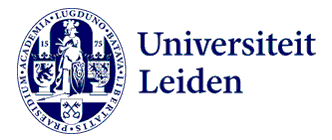Komparasi empat jenis primer molecular sexing pada famili burung berbeda
Comparison of four types molecular sexing primers in different bird families
DOI:
https://doi.org/10.46549/jipvet.v13i1.359Keywords:
Birds, Molecular sexing, PCR, Primer selection, Sex determinationAbstract
Determination sex of birds by the Polymerase Chain Reaction (PCR) method is increasingly popular among researchers and the public. The PCR method is known to provide accurate test results in determining the sex of birds, but one of its successes is greatly influenced by the compatibility between the primers used and the template DNA. This study was conducted to evaluate the use of primers 2550F/2718R, 1237L/1272H, P2/P8, and CHD1F/CHD1R in birds from the families Phasianidae, Estrildidae, Passeridae, and Psittacidae. PCR sexing was performed on DNA samples from the 4 bird families above, using primers 2550F/2718R, 1237L/1272H, P2/P8, and CHD1F/CHD1R. PCR results were evaluated by comparing the size of the PCR band with a reference. The results showed that the CHD1F/CHD1R primer could be used in 4 families tested. PCR products for male birds showed 1 band measuring approximately 500 bp, while for female birds 2 bands were 500 and 320 bp. Primer 2550F/2718R could only be used in the families Phasianidae and Psittacidae, while 1237L/1272H and P2/P8 could not be used in the samples tested. CHD1F/CHD1R primers can be used to determine the sex of birds from the families Phasianidae, Estrildidae, Passeridae, and Psittacidae.
Downloads
References
Çakmak E, Akın Pekşen, Ç and Bilgin CC. 2017. Comparison of three different primer sets for sexing birds. Journal of Veterinary Diagnostic Investigation. 29(1):59-63. https://doi.org/10.1177/1040638716675197.
Romanov MN, Betuel AM, Chemnick LG, Ryder OA, Kulibaba RO, Tereshchenko OV, Payne WS, Delekta PhC, Dodgson JB, Tuttle EM and Gonser RA. 2019. Widely applicable PCR markers for sex identification in birds. Russian Journal of Genetics. 55(2):220-231. https://doi.org/10.1134/S1022795419020121.
Akrom AM, Indarjulianto S, Yanuartono Y, Susmiati T, Nururrozi A, Raharjo S, Permana RGS and Sitompul YY. 2020. Swab Bukal Sebagai Bahan Sexing Piyikan Burung Kenari (Serinus canaria) dan Burung Merpati (Columba livia). Jurnal Sain Veteriner. 38(1):31-36. https://doi.org/10.22146/jvs.49032.
Turcu MC, Paștiu AI, Bel LV and Pusta DL. 2023. A Comparison of Feathers and Oral Swab Samples as DNA Sources for Molecular Sexing in Companion Birds. Animals. 13(3):525. https://doi.org/10.3390/ani13030525.
Begovic L, Mihic I, Pospihalj T, Mikuska T, Mlinaric S and Mikuska A. 2017. Evaluation of methods for molecular sex-typing of three heron species from differentDNA sources. Turkish Journal of Zoology, 41(4): 593-598. https://doi.org/10.3906/zoo-1602-47.
Yuda P and Saputra AW. 2021. Eggshell membrane for DNA sexing of the endangered Maleo (Macrocephalon maleo). F1000Research. 9:599. https://doi.org/10.12688/f1000research.23712.4.
Khaerunnisa I, Sari E, Ulfah M and Sumantri C. 2013. Avian sex determination based on chromo helicase DNA-binding (CHD) genes using polymerase chain reaction (PCR). Media Peternakan. 36(2):85-85. https://doi.org/10.5398/medpet.2013.36.2.85.
Turcu MC, Bel LV, Collarile T and Pusta DL. 2020. Comparative Evaluation Of Two Techniques Of Sex Determination In Lovebirds (Agapornis Spp.). Bulletin of the University of Agricultural Sciences & Veterinary Medicine Cluj-Napoca. 77(2): 106-114. https://doi.org/10.15835/buasvmcn-vm:2020.0030
Hidayat RFK, Savitri D, Putri I, Nugrahani WP and Haryanto A. 2021. Molecular bird sexing of Tanimbar cockatoos (Cacatua goffiniana) by using polymerase chain reaction method. Journal of Tropical Biodiversity and Biotechnology. 6(2):59997. https://doi.org/10.22146/jtbb.59997.
Volodin IA, Volodina EV, Klenova AV and Matrosova VA. 2015. Gender identification using acoustic analysis in birds without external sexual dimorphism. Avian Research. 6:20. https://doi.org/10.1186/s40657-015-0033-y.
Purwaningrum M, Nugroho HA, Asvan M, Karyanti K, Alviyanto B, Kusuma R and Haryanto A. (2019). Molecular techniques for sex identification of captive birds. Veterinary world. 12(9):1506-1513. https://doi.org/10.14202/vetworld.2019.1506-1513.
Disastra, Y. 2021. Validasi Jenis Kelamin Burung Famili Columbidae dari Informasi Penjual Dibandingkan dengan Polymerase Chain Reaction (PCR) dan Nekropsi. Proyek Akhir. Program Studi Teknologi Veteriner. Sekolah Vokasi. Universitas Gadjah Mada.
Fitriana F, Resita R, Disastra Y, Setyorini DS, Haryanto A and Aziz F. 2023. Evaluation of primers targeting chromo helicase DNA-binding gene (CHD) for molecular sexing identification in four bird families. Livestock and Animal Research. 21(1):17-28. https://doi.org/10.20961/lar.v21i1.66998.
England AD, Kheravii SK, Musigwa S, Kumar A, Daneshmand A, Sharma NK, Gharib-Naseri K and Wu SB. 2021. Sexing chickens (Gallus gallus domesticus) with high-resolution melting analysis using feather crude DNA. Poultry Science. 100(3): 100924. https://doi.org/10.1016/j.psj.2020.12.022.
Kroczak A, Wierzbicki H and Urantówka AD. 2022. The Length Polymorphism of the 9th Intron in the Avian CHD1 Gene Allows Sex Determination in Some Species of Palaeognathae. Genes. 13(3):507. https://doi.org/10.3390/genes13030507.
Griffiths R, Double MC, Orr K and Dawson RJG. 1998. A DNA test to sex most birds. Molecular Ecology. 7(8):1071-1075. https://doi.org/10.1046/j.1365-294x.1998.00389.x.
Kahn NW, John JS and Quinn TW. 1998. Chromosome-specific Intron Size Differences in the Avian CHD Gene Provide an Efficient Method for Sex Identification in Birds. The Auk. 115 (4):1074-1078. https://doi.org/10.2307/4089527.
Fridolfsson AK and Ellegren H. 1999. A Simple and Universal Method for Molecular Sexing of Non-Ratite Birds. Journal of Avian Biology. 30(1):116-121. https://doi.org/10.2307/3677252.
Lee JCI, Tsai LC, Hwa PY, Chan CL, Huang A, Chin SC, Wang LC, Lin JT, Linacre A and Hsieh HM. 2010. A novel strategy for avian species and gender identification using the CHD gene. Molecular and Cellular Probes. 24(1):27-31. https://doi.org/10.1016/j.mcp.2009.08.003.
van der Velde M, Haddrath O, Verkuil YI, Baker AJ and Piersma T. 2017. New primers for molecular sex identification of waders. Wader Study. 124(2):147-151. https://doi.org/10.18194/ws.00069.
Ciorpac M, Druica RC, Ghiorghita G, Cojocaru D and Gorgan DL. 2016. CHD genes: a reliable marker for bird populations and phylogenetic analysis? Case study of the superfamily Sylvioidea (Aves: Passeriformes). Turkish Journal of Zoology. 40(5):749-57. https://doi.org/10.3906/zoo-1510-22.
Kroczak A, Wołoszyńska M, Wierzbicki H, Kurkowski M, Grabowski KA, Piasecki T, Galosi L and Urantówka AD. 2021. New Bird sexing strategy developed in the order Psittaciformes involves multiple markers to avoid sex misidentification: Debunked myth of the Universal DNA marker. Genes. 12(6):878. https://doi.org/10.3390/genes12060878.
Kulibaba R and Liashenko YV. 2021. Analysis of CHD Gene Polymorphism as a Model Object for Molecular Sexing of Eurasian Eagle-Owl (Bubo bubo). Cytology and Genetics. 55(4):324-30. https://doi.org/10.3103/S0095452721040071.
Morinha F, Cabral JA, Martins S, Cruz E, Alvura N, Nunes P, Direitinho J, Magalhães P and Bastos E. 2015. Revolution in the molecular sexing of ratite birds: identification and analysis of new candidate sex-linked markers. Avian Biology Research. 8(3): 145-159. https://doi.org/10.3184/175815515X14380769320720.
Green MR and Sambrook J. 2019. Polymerase chain reaction. Cold Spring Harbor Protocols. 2019(6):pdb. top095109. https://doi.org/10.1101/pdb.top095109.
Vucicevic M, Stevanov‐Pavlovic M, Stevanovic J, Bosnjak J, Gajic B, Aleksic N and Stanimirovic Z. 2013. Sex determination in 58 bird species and evaluation of CHD gene as a universal molecular marker in bird sexing. Zoo biology. 32(3):269-276. https://doi.org/10.1002/zoo.21010.
Mazzoleni S, Němec P, Albrecht T, Lymberakis P, Kratochvíl L and Rovatsos M. 2021. Long‐term stability of sex chromosome gene content allows accurate qPCR‐based molecular sexing across birds. Molecular Ecology Resources. 21(6):2013-2021. https://doi.org/10.1111/1755-0998.13381.
Pamulang YV and Haryanto A. 2021. Molecular bird sexing on kutilang (Pycnonotus sp.) based on amplification of CHD-Z and CHD-W genes by using polymerase chain reaction method. Biodiversitas. 22(1):449-452. https://doi.org/10.13057/biodiv/d220155.
Gebhardt KJ and Waits LP. 2008. High error rates for avian molecular sex identification primer sets applied to molted feathers. J. Field Ornithol. 79(3):286-292. https://doi.org/10.1111/j.1557-9263.2008.00175.x.
Fitriana YS, Irham M and Sutrisno H. 2020. A molecular genetic approach for sex determination on helmeted hornbill (Rhinoplax vigil) casque: a forensic casework. in BIO Web of Conferences. https://doi.org/10.1051/bioconf/20201900020.
Huang HW, Su YF, Yao CT, Hung YC, Chen CC, Cheng CC, Li SLS and Chang HW. 2011. High-throughput gender identification of three Columbidae species using melting curve analysis. Theriogenology. 75(1):73-79. https://doi.org/10.1016/j.theriogenology.2010.07.012.
Downloads
Published
How to Cite
Issue
Section
License
Copyright (c) 2023 Fauziah Fitriana, Dian Ritma Setyorini, Clara Ajeng Artdita, Risa Ummami, Aris Haryanto, Fatkhanuddin Aziz

This work is licensed under a Creative Commons Attribution-NonCommercial-ShareAlike 4.0 International License.
License and Copyright Agreement
In submitting the manuscript to the journal, the authors certify that:
- They are authorized by their co-authors to enter into these arrangements.
- The work described has not been formally published before, except in the form of an abstract or as part of a published lecture, review, thesis, or overlay journal. Please also carefully read Jurnal Ilmu Peternakan dan Veteriner Tropis (Journal of Tropical Animal and Veterinary Science) Posting Your Article Policy at https://journal.fapetunipa.ac.id/index.php/JIPVET/publicationethics
- That it is not under consideration for publication elsewhere,
- That its publication has been approved by all the author(s) and by the responsible authorities “tacitly or explicitly“ of the institutes where the work has been carried out.
- They secure the right to reproduce any material that has already been published or copyrighted elsewhere.
- They agree to the following license and copyright agreement.
Copyright
Authors who publish with Jurnal Ilmu Peternakan dan Veteriner Tropis (Journal of Tropical Animal and Veterinary Science) agree to the following terms:
- Authors retain copyright and grant the journal right of first publication with the work simultaneously licensed under a Creative Commons Attribution License (CC BY-NC-SA 4.0) that allows others to share the work with an acknowledgment of the work's authorship and initial publication in this journal.
- Authors are able to enter into separate, additional contractual arrangements for the non-exclusive distribution of the journal's published version of the work (e.g., post it to an institutional repository or publish it in a book), with an acknowledgment of its initial publication in this journal.
- Authors are permitted and encouraged to post their work online (e.g., in institutional repositories or on their website) prior to and during the submission process, as it can lead to productive exchanges, as well as earlier and greater citation of published work.

This work is licensed under a Creative Commons Attribution-NonCommercial-ShareAlike 4.0 International License.





























.png)
